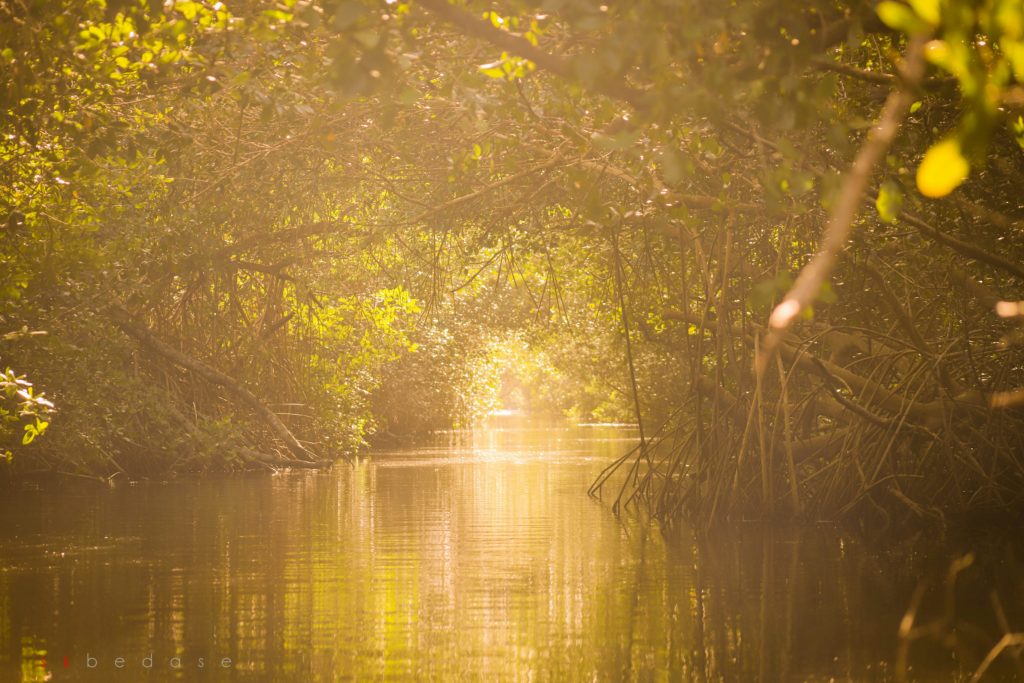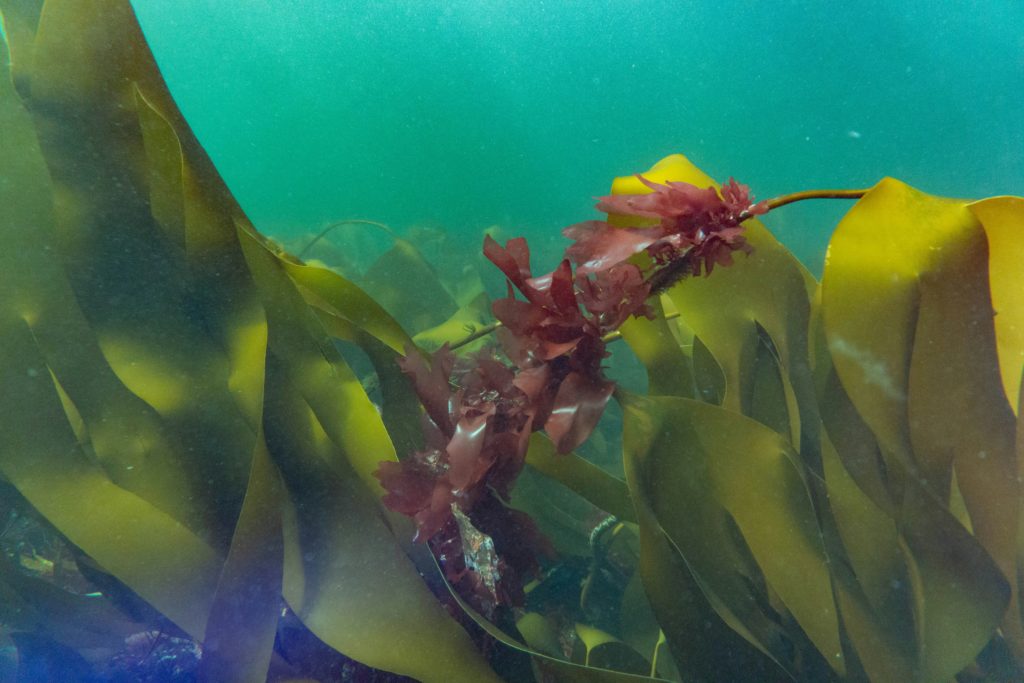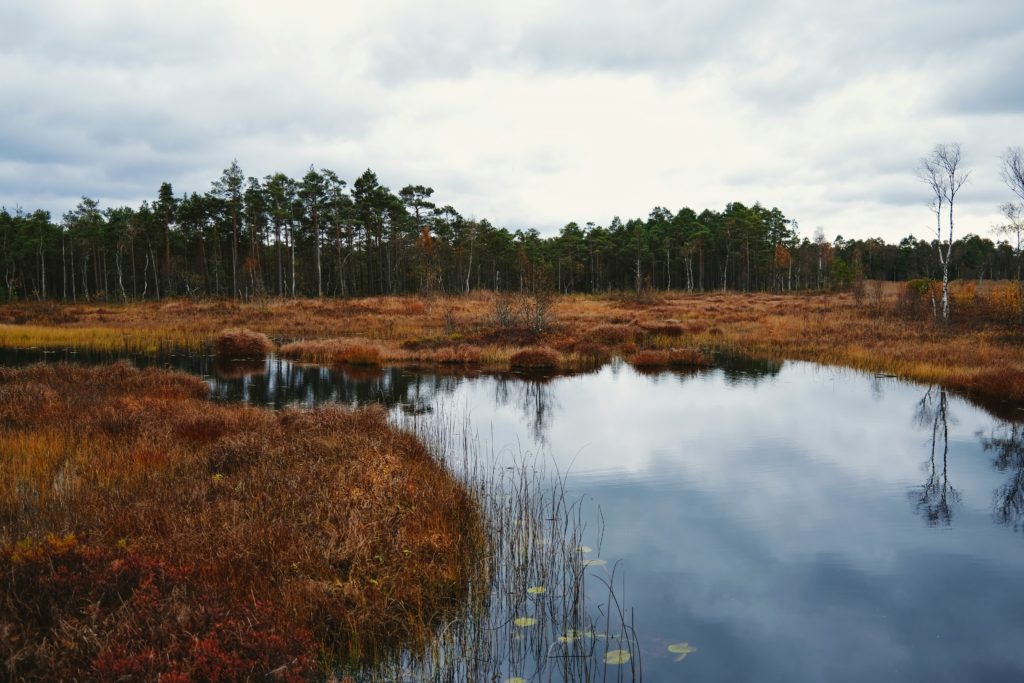Part 2 of a two-part series on how to tackle Climate Change
Mangrove Swamps Make Wonderful Carbon Sinks

Restoring Nature can help us tackle Climate Change
Humanity has created utter chaos in this beautiful world of ours. Nature can help us repair that damage and prepare us for a different future – if we let it. Everywhere there is evidence of our indifference, neglect and overuse. It is time to give Nature a chance to create its magic. Nature needs our help.
Nature is important to mankind for many different reasons. (See my Blog Nature Needs our Help.) Right now one of the most important contributions it makes is to take carbon dioxide out of the air. (An area that naturally stores carbon from the air such as a forest or a peatbog is called a carbon sink. An area that releases carbon back into the atmosphere such as a dried-out peatbog is called a carbon source.) An excess of carbon dioxide and other Greenhouse Gases like methane (a carbon-based gas) are sitting in our atmosphere causing climate disorder. Most of it has been put there by our present lifestyles.
Sequestration of Carbon
Science shows us that already Nature in the form of the oceans, forests, plants and our soil is responsible for removing a vast amount of carbon from the air, (sequestering). If that was not the case we would be in a much worse situation and the planet would be a lot warmer. However as we have severely damaged these biological systems, we are not receiving the full benefits from the natural world. We have acidified and polluted the seas, chopped down our forests, ruined our soils with pesticides and created deserts where there were none before. It is clear that if we can return Nature to her full strength then we can help keep the warming of the planet within reasonable boundaries and possibly even start to withdraw carbon from the atmosphere.
Some scientists, such as the group Project Drawdown say that “Our scientific analysis shows that the world can reach drawdown – the point in time when levels of greenhouse gases in the atmosphere stop climbing and start to steadily decline – by mid-century if we make the best use of all existing climate solutions.”
This would stabilise and reduce the warming of the planet for future generations. It would also require significant changes to our way of life which in my opinion would be beneficial. Transformations like making our food system Nature-friendly, drastically reducing poverty, educating and empowering women and funding developing countries to help them adapt to Climate Change are but a few of these.
Seaweed – Another Great Carbon Sink

Nature can be very resilient if we give it a chance
It is important to remember when comparing the Geoengineering way and Nature’s way of tackling Climate Change to consider that if we are using natural solutions then they are beneficial to mankind. With geoengineering as it is at present, not only are there considerable risks from some of the options but they will not give us the additional benefits that we get from natural systems, such as fresh air, fresh water or shade.
What benefits do we already get from the Earth and how can we improve on them?
Forests
Trees capture and store substantial amounts of carbon from the atmosphere. This article from PEFC (the Programme for the Endorsement of Forest Certification) shows the many ways that forests can help us live healthy lives and stabilise the planet’s ecosystems.
Forests help control soil erosion, landslides and avalanches, protect against flooding and strong winds. They are very rich in animal and plant life and are particularly important in preserving the world’s water resources and stabilising the soil. Deforestation not only destroys a forest’s ability to absorb or sequester carbon from the atmosphere but also often leads to desertification and degraded land.
Tropical forests are particularly good at sequestering carbon and yet they are under severe threat of deforestation. The enormous forests of the Amazon and of the Congo river basin are under considerable risk because of deforestation and increased use for agriculture. This is really important for the whole of our water cycle. See this article on the Congo rainforests.
The world is slowly beginning to wake up to the importance of our trees. However I believe we still have a lot of learning to do about how we use them for restoration of the land.
Tree Planting
In examining the success of massive tree planting projects one needs to be a little careful. It is important to read between the lines of any report.
For example the Chinese and various African countries have embarked on the building of “Green Walls” both across Africa and in the Gobi and Taklamakan deserts in China in order to stop deserts expanding, providing work and contributing to the fight against hunger.
Are these projects actually working?
There is considerable doubt about these projects and how much good they are doing, in spite of the planting of many millions of trees.
A growing number of people are concerned that the needs of local people are not being met, large numbers of the trees are dying, and in the case of Africa, scientists believe that the Sahara desert is not actually expanding.
However where the tree planting is more localised, the needs of local communities are taken into account and a mixed method of restoring forests is used there have been considerable achievements.
An article by Mongabay shows that “ the idea of a wall of trees has morphed into a mosaic of landscapes that provide multiple benefits: preventing aridification, combating climate change, and supporting local livelihoods through agriculture, beekeeping, agroforestry and animal rearing.”
The organisation Planetwild shows that while the idea of a massive Green Wall project is not successful as a whole, there are many individual communities that are gaining considerable success from their part of the project. It seems that if local people see benefits, either financial or otherwise then they are happy to put their efforts into the project.
Nevertheless caring for our forests is of critical importance and we must stop deforestation and restore and rewild what we can. The world is slowly beginning to wake up to the importance of our trees and there are very interesting conservation projects happening worldwide.
Peat Bogs are Important Carbon Sinks

Peatlands/Peat Bogs
According to the UNEP, peatlands store twice as much carbon as all the world’s forests. They say that “ a lack of appreciation of this unique ecosystem and a lack of awareness of the benefits of peatlands mean that they have been severely overexploited and damaged by drainage, agricultural conversion, burning and mining for fuel.”
When drained or burned for agriculture (as wetlands often are) they go from being a carbon sink to a carbon source, releasing into the atmosphere centuries of stored carbon. CO2 emissions from drained and burned peatlands comprise 10% of all annual fossil fuel emissions.
Mangrove Swamps
The World-Wide Fund for Nature believes that wetlands like mangrove swamps, seagrasses and marshes are highly efficient at storing carbon. More so than forests as they can store more carbon in the soil beneath their roots. However mankind has not considered these valuable and many of those carbon sinks have been cut down, dug up or dried up in an attempt to use the land beneath for agriculture or the development of seafront properties.
Wild Seaweed according to the Nature Conservancy is an excellent sequester of carbon as it grows very quickly and when it sinks in deep water the carbon is kept out of use for a long time. Interestingly, farmed seaweed, while a fast-growing industry, is often eaten by humans and returned to the atmosphere quickly. Its effectiveness as a carbon sink is still being investigated.
These are only a few of the ways that Nature can take carbon out of the atmosphere. Also I have only discussed that aspect of their contribution. As mentioned above their gifts to humanity are widespread and we could not survive without them.
Is Nature’s Way Better?
It is my opinion that Nature’s Way is infinitely better and much less risky than the use of Geoengineering. We don’t fully understand our natural systems fully, so we don’t know what we are destroying.
There may come a time when we are forced to use largescale technological projects to save our civilisation but I very firmly believe that we must give Nature a chance.
What can you do to help Nature?
- Cut down your consumption of beef to avoid deforestation
- Don’t buy wooden furniture from unknown sources
- Help fund organisations like WWF
- Get active if local government wants to cut down old trees
- Plant trees and bushes
- Use non-peat-based compost in the garden
- Support, financially or otherwise the restoration of Nature
- Support rewilding
- Complain very loudly if governments want to destroy Nature.
By working with Nature we can help create a healthier future for us all.
To subscribe to my blog, please use the form on the Home page.
Photos by Stephen Bedase, Stepan Ivanov and Magnus Jonasson on Unsplash

Thank you, Doreen! I am so appreciative of your encouragement as we live into the new crises that come almost daily. Another item to add to a future list of actions is to not buy new things whenever possible! That one is challenging on many fronts, but I truly believe it is important. Clothing, especially, is an incredibly dirty industry! Thank you, thank you, for your work in the world.
Thank you Amy. It is great to have your encouragement, as always. I think you are so right about the clothing.
Ocasionally though I do look at some of my clothes and think maybe 25 years is just too long!! Photographs have a tale to tell.
I will put buying new things on my list of possibilities for blogs.
The peat free compost is a challenge in France as there is a lack of awareness of the problem and not much of this available to us gardeners. You have to search it out. I found some in Bricomarché.
Dear Katherine, I honestly thought I had replied to this one! I am sorry not to
have got back to you sooner. I really appreciate you taking the time to make a comment.
You are, of course, right about peat free compost in France. It is very hard to find
and they give you such a look when you ask for it! At least down here they do.